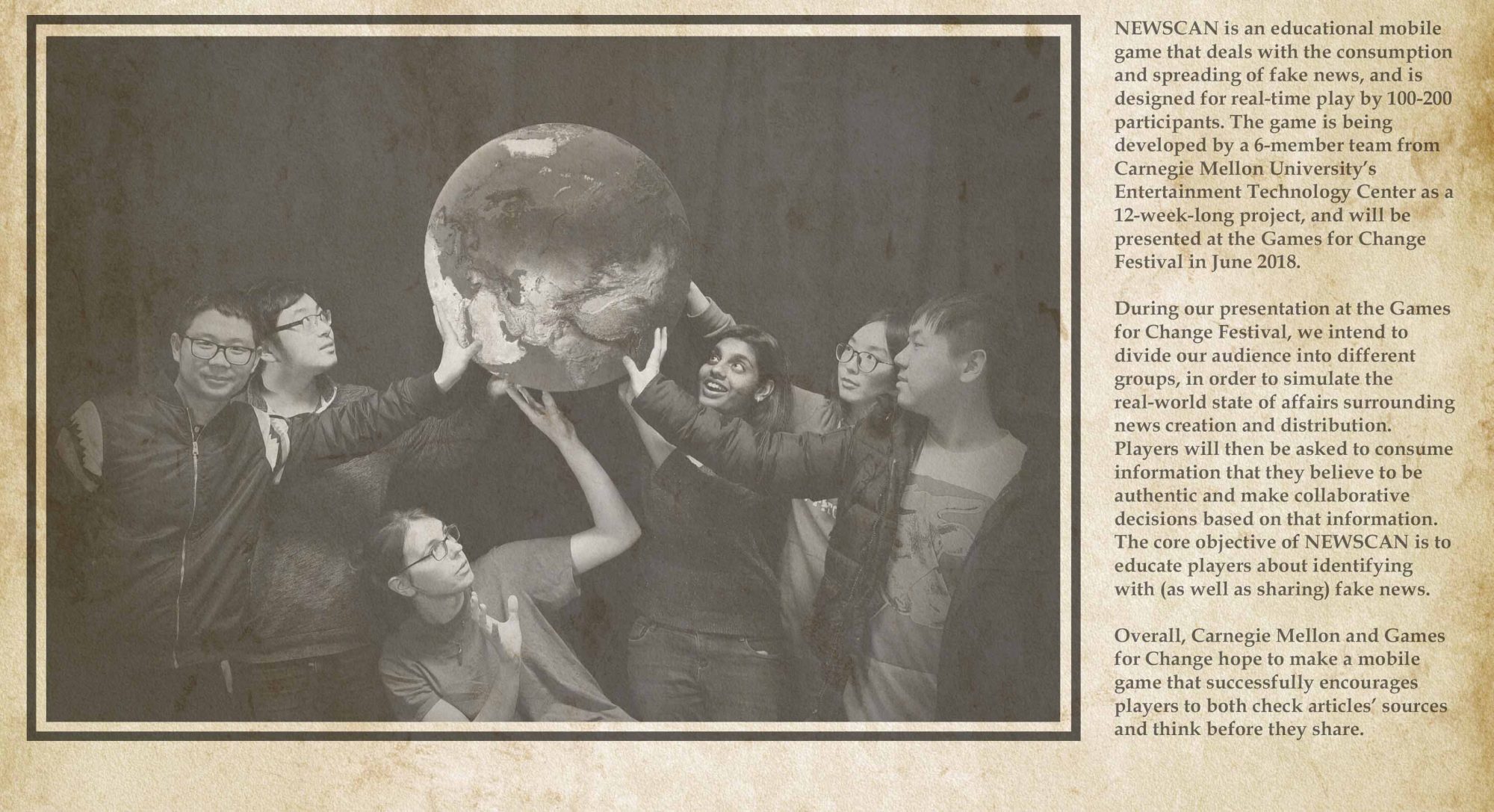Since quarters, we have been aiming to address some of the most common observations made during our presentation. On Monday, all the faulty came through for a brief presentation and conversation, and we got some great advice. Over the past several days, we have held consistent design meetings, each of which have been focused on striking at the feedback we received concerning our lack of goals (e.g. what players are learning, how players are transformed, et cetera) and our need to consider how our audience will achieve those goals. In going about solving those issues, we have changed several aspects of our design process:
- First, we have generalized our audience a bit to “college-educated professionals” (which simultaneously describes the vast majority of Games For Change attendees and extends our game’s impact beyond this one conference alone).
- We have conducted more research (some of which we were pointed towards by ETC faculty members such as Jessica Hammer).
- We have settled on an overarching transformational goal (one of belief).
- We have defined various specific goals (both contextual and transformational) that we could address in our game.
- We have defined the barriers that are impeding our audience from being transformed (we’ve decided that these are misconceptions, difficulty, complexity and ignorance).
- We have also started reaching out to relevant experts in both the study of fake news and the creation of transformational experiences:
Jessica Hammer has put us in touch with Samantha Weaver (who has examined fake news through the lens of text-based games).
We have additionally gotten in touch with Greg Trefry of Gigantic Mechanic (he’s a game designer who has experience in designing transformational experiences for large crowds to play together, such as the Senate Immersion Module).
- Finally, we’ve taken the goals and barriers that we’ve defined and are working on integrating them with a couple of new ideas we’ve brainstormed (both based on the blood cell concept that we pitched to our client last Friday), which we will have developed further by the end of today. We are now leaning away from the narrative-based game concepts we developed previously because of two main reasons:
First, our client preferred the idea of the blood cell game to our two narrative game concepts (mainly due to its potential for both surprises and social interaction).
Second, it would be a good idea for us to design an experience that either does not take an entire hour or allows players to join at any time, to come and go as they please; this is something neither of our narrative games addresses.

On Thursday, we came up with goals based on Sabrina Culyba’s transformational framework. We also reached out to the designers at Gigantic Mechanic and are waiting to get some feedback on conducting big games.
The following day, our team was able to meet with our client and get some feedback on our new ideas, after which we were able to get a look at the room we will be presenting in during the Games for Change Festival. We also met with our faculty advisors and got additional feedback concerning several problems that they noted during our quarters presentation:
They couldn’t make a connection between our current prototype and fake news.
The target audience and project goal was not clear for some faculty members.
The description for our project during the presentation was too detailed, and faculty members were confused about it.
Finally, during this meeting, both of our advisors pointed out an article that could prove to be very useful/inspiring for us as we move forward: https://mondaynote.com/when-fake-news-will-be-made-by-pros-396a1ce4d0bf.

